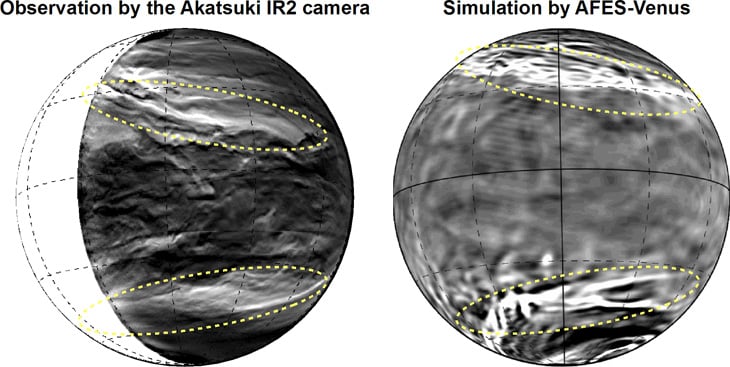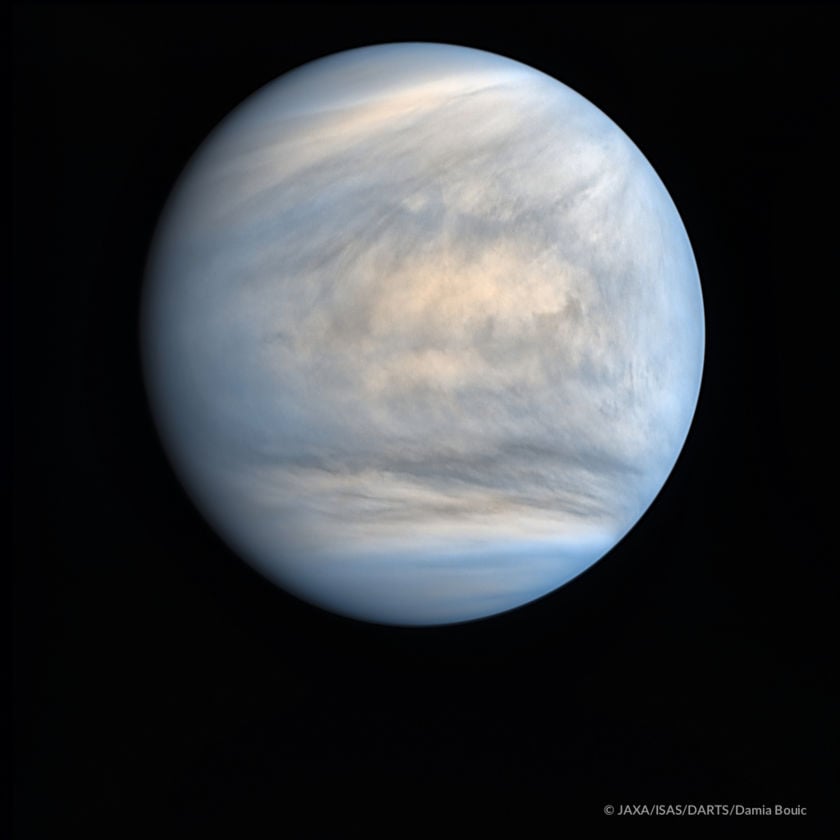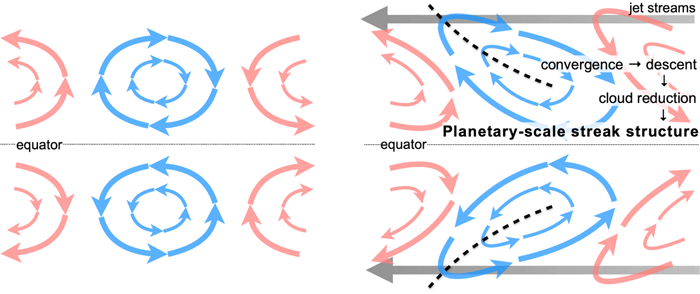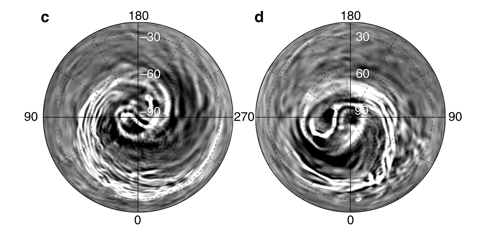A team of researchers in Japan has discovered a gigantic streak structure in the cloud tops of Venus. The discovery is based on observations of Venus by the Japanese spacecraft Akatsuki. The findings were published in January 9th in the journal Nature Communications.
Venus is unlike any other planet in the Solar System. The entire planet is shrouded in thick clouds of sulfuric acid between altitudes of 45 km to 70 km. This thick shroud has prevented scientists from studying Earth's so-called "sister planet" in detail. But Japanese researchers are making progress.
The discovery of these giant streaks began with the Japanese spacecraft Akatsuki. Akatsuki, also called the Venus Climate Orbiter, is a mission of the Japan Aerospace Exploration Agency (JAXA). The spacecraft has been in orbit around Venus since December 2015. It discovered the massive streak structure in middle and lower cloud images of Venus' night-side taken by the IR2 (Infrared 2) camera on the orbiter. The observational data from IR2 was not high quality, and unfortunately that camera no longer functions, so it's been unable to examine the structure further and to tease out the streak's cause.
The Japanese team, led by Project Assistant Professor Hiroki Kashimura, (Kobe University, Graduate School of Science), used a computer program called AFES-Venus to calculate simulations of Venus' atmosphere. This is something done commonly on Earth to predict weather, storms, and climate change. They hoped that the simulations and the observations from Akatsuki together would reveal the nature of the planet-scale streaks.
When it comes to Venus, simulations are an even more important tool for understanding what happens in that planet's atmosphere, because observing it is so difficult. Unfortunately, the difficulty in observing Venus also makes it hard to confirm simulations.
But AFES-Venus had already had some success. The program had been used successfully to reproduce the super-rotational winds and polar temperature structures in Venus' atmosphere. The Japanese team also used another simulator provided by the Japan Agency for Marine-Earth Science and Technology (JAMSTEC) to create higher-resolution numerical simulations of Venus.
The team analyzed the simulations and discovered what they think causes these gigantic streaks. The streaks are formed from the interplay of two atmospheric phenomena. The first cause of this structure is a phenomenon closely connected to Earth's everyday weather: polar jet streams.
Polar jet streams form in the middle and high levels of the atmosphere here on Earth. The simulations in this study show that the same thing happens on Venus. Both are formed from the large-scale wind dynamics in the atmosphere's of both planets. But on Venus, there's something else at work.
At lower latitudes, an atmospheric wave due to the distribution of large-scale flows and the planetary rotation effect (Rossby wave) generates large vortexes across the equator to latitudes of 60 degrees in both directions. Venus is different than Earth when it comes to rotation. It rotates in the opposite direction than Earth, and it rotates slowly: It takes the planet 243 Earth days to complete one rotation.
When the vortexes are added to the polar jet streams on Venus, the vortexes tilt and stretch, and the convergence zone between the north and south winds forms as a streak. The north-south wind that is pushed out by the convergence zone becomes a strong downward flow, resulting in the planetary-scale streak structure.
The study is a successful combination of observational evidence and simulations. Venus' atmosphere is difficult to study, and most studies have focused on two dimension, from East to West. But this study starts to add a third dimension to our understanding of Venus.
The team behind the study is confident of their findings, but they caution that it's not a complete picture of the causes of the gigantic streaks. As they say in their paper, "Though we have discussed a possible formation mechanism of the planetary-scale streak structure as above, we should note that the details of the disturbances, instabilities, and the angular momentum balance in our simulation are still unclear and remain to be explored."
They also state that further study is necessary to understand all the detail behind the phenomena. "We need to understand these mechanisms to evaluate the robustness or sensitivity of the speculated formation mechanism presented here. However, we keep these further investigations for our future studies."
Sources:
- Kobe University Press Release: Giant pattern discovered in the clouds of planet Venus
- Research Paper: Planetary-scale streak structure reproduced in high-resolution simulations of the Venus atmosphere with a low-stability layer
- Wikipedia Entry: Akatsuki spacecraft
 Universe Today
Universe Today



